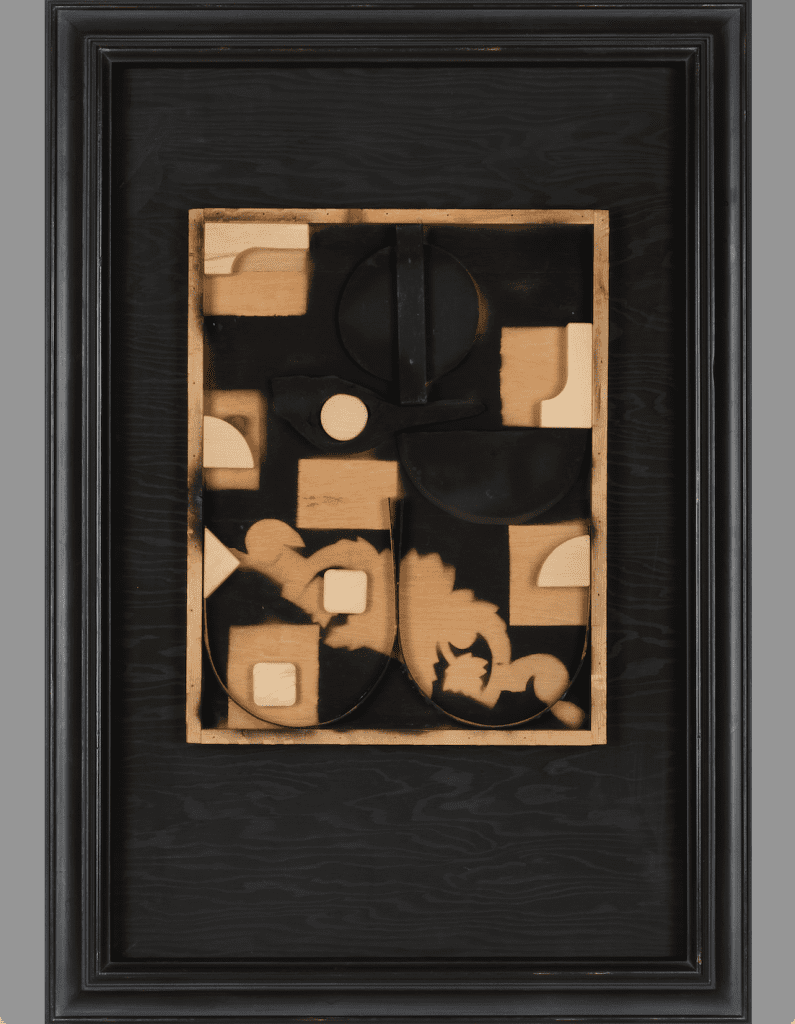Louise Nevelson (1899-1988)
Untitled, 1961
Paint and wood on board
Courtesy of the Leonid and Tatiana Nevzlin Collection
The Ukrainian-American sculptor Louise Nevelson was known for her wooden reliefs. These wall-like collages consisted of boxes and compartments that held abstract shapes. While many of her male contemporaries were working in metal, Nevelson found inspiration in wood.
More Info
Louise Nevelson was born Leah Berliawsky in Pereyaslav, fifty miles southeast of Kiev. The Berliawskys were Orthodox Jews who spoke Yiddish at home. She immigrated to the US in 1905 and in 1920 she married Charles Nevelson and settled in New York, where she could devote herself to her passions: painting, dance, singing, piano and theatre. In 1931, divorced, and went to Europe on her own, where she further developed her knowledge of Cubism and primitive art. She eventually became a famous American sculptor known for her large monochromatic abstract sculptures and environments in wood and other materials. In her search for new materials Nevelson was drawn to wood, as opposed to bronze or marble. This choice reflected her past; her father was a woodcutter and lumberyard owner, and the organic material was a common presence throughout her childhood. Usually black, with isolated departures into white and gold, Nevelson assembled the sculptures using discarded pieces of wood that she received or found on the street. As part of her massive, commanding works of art, the scrap wood takes on majestic proportions, reflecting the artist’s personal story of dislocation and self-invention. She is best known for works consisting of open-faced wooden boxes that are stacked to make freestanding walls. Within the boxes are displayed carefully arranged and highly suggestive collections of abstract-shaped objects mingled with found objects and pieces of bric-a-brac. The boxes and their contents are painted a single colour, usually black, though she coloured sculptures in white or gold as well.
Nevelson was typically willing to weave any intriguing material into her personal myth, but she was notably reticent on the subject of her Jewish heritage. When questioned in interviews on this topic she replied that it was too personal to discuss. The spirituality of Louise Nevelson’s work might best be understood by considering her repeated emphasis on a search for harmony. When asked about designing a Christian chapel as a Jew, Nevelson replied, “To me there is no distinction between a church and a synagogue. If you go deep enough into any religion you arrive at the same point of harmony.”
This work is an example of Nevelson’s small-scale abstract constructions that relied on found materials selected for their visual or emotional appeal. She commissioned synagogue reliefs and Holocaust memorials to express only universal rhythms, as she claims that “religion, if you feel it, belongs to the world.” She played a leading role in the history of modern sculpture in the United States.

